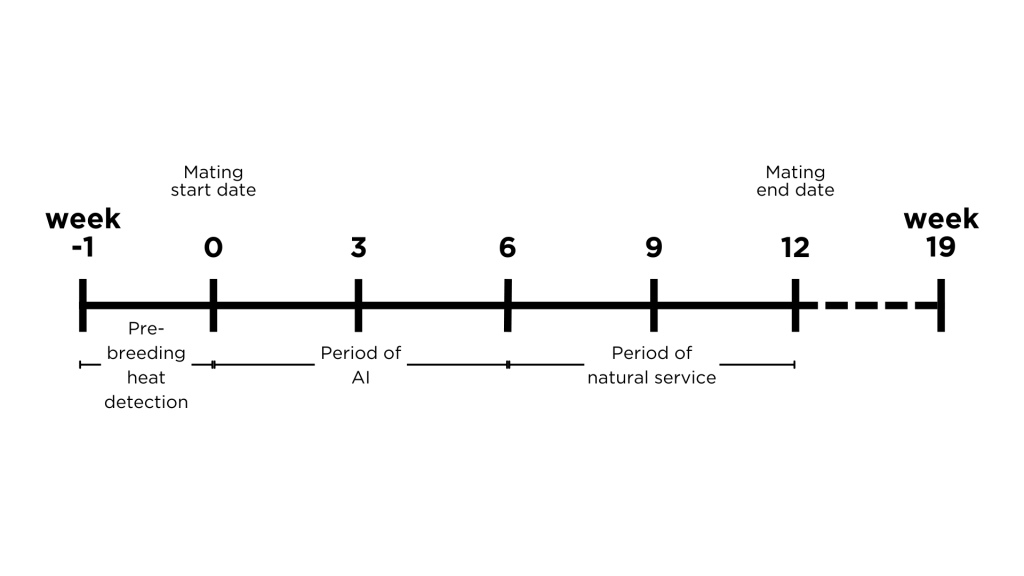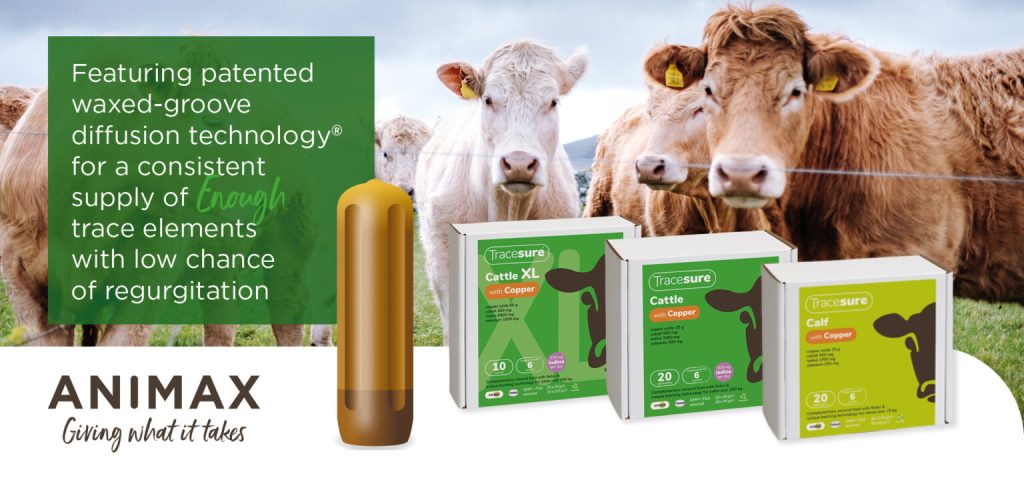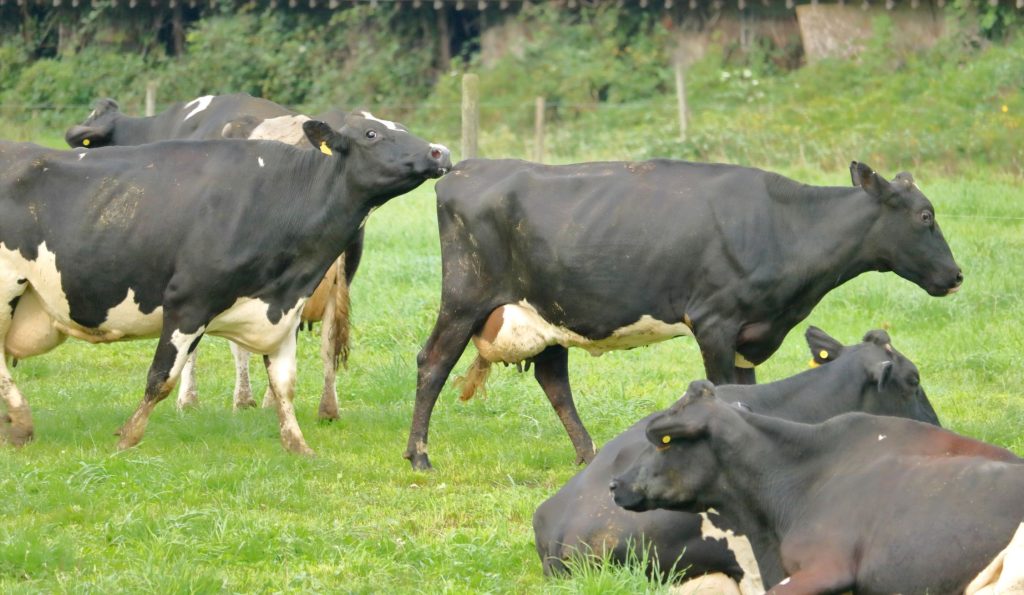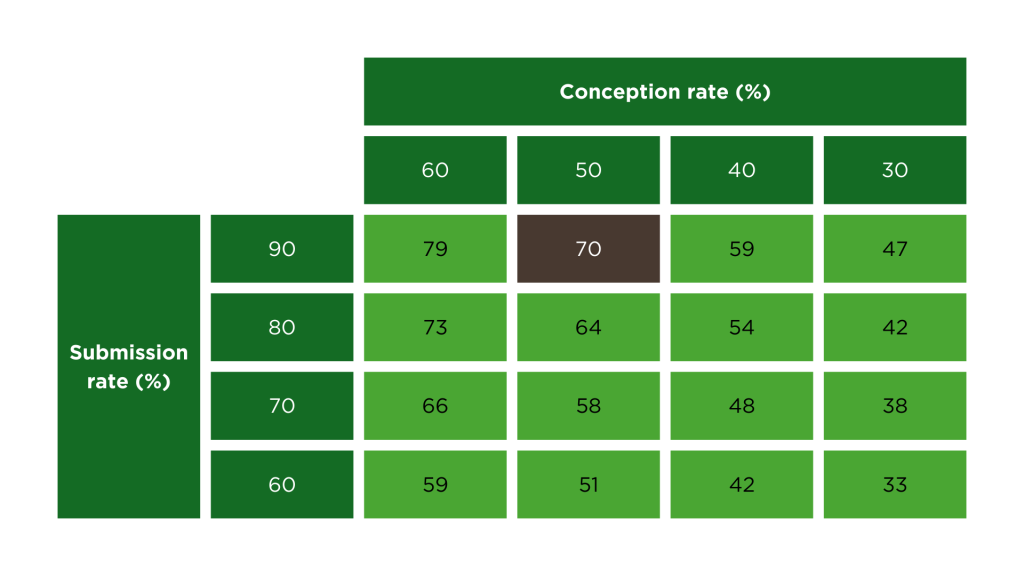Fertility performance targets explained
With extended calving intervals cited at a hefty cost average of £5.89 per day per cow in the UK (Source: Kingshay, 2023) and €3.81 per day per cow in Ireland (Source: Teagasc 2021), fertility of the milking herd commands serious focus and attention.
Profitability to one side, hitting target rates helps to compact calving periods, simplify calf rearing, extend any milking ‘holidays’, and allow for a good window between calving and breeding on seasonal calving systems. For all year round systems, hitting target rates helps to reduce the labour associated with fertility programmes.
Hitting fertility targets – namely submission rate, conception rate, and pregnancy rate – hinges on good pre-breeding management on-farm.
- Submission rate is expressed as how many cows show an obvious solid standing heat, as well as how ready a cow is to hold to service or insemination when ovulating.
- Conception rate is expressed as the percentage of cows that hold to first service and can vary depending on many factors.
- Pregnancy rate is expressed as the number of cows that are positively diagnosed as in-calf after first service.
Example breeding programme for more compact calving

It goes without saying that the dry cow period is the cornerstone for a smooth transition between one lactation and the next, and consequently hitting fertility targets. For more on this, check out our blog: Are they getting enough to transition smoothly?
Effect of submission and conception rate on pregnancy rates
So, for example, if your conception rate is 50%, and your submission rate is 90%, then 70% of your herd will be in-calf in the first 6 weeks of breeding. Whilst Teagasc target 90% of the herd calved in a 6 week block, the reality target is closer to 70% (source: Teagasc).
Understanding early to mid-lactation
To effectively cater to a cow’s specific developing needs, it is essential we understand what is happening within her from early-lactation to mid-lactation.
Having gone through the stress of calving, the cow requires energy for recovery, whilst at the same time having to direct energy to colostrum and milk production.
Energy for her next pregnancy at this stage is effectively third in the queue.
It will take the next 12 weeks for her appetite to return as the rumen has to stretch back and rumen papillae has to regrow. During this time, she will supplement dietary energy and protein with her own body reserves. She will also deplete her trace element reserves to support her bodily functions.

This is why it is so vital that she goes into calving with the right body condition and trace element reserves, and that diets are satisfying her macronutrient and micronutrient needs coming out of calving.
4 pre-breeding preparation hints
- Body condition score to hit target rate of 2.5-2.75. Separate and supplement any under condition cows with balanced feeding to bring them up to target as quickly as possible ready for breeding.
- Understand your trace element status to identify and supplement against any deficiencies that can impact digestion, immunity, and reproductive performance.
- Work closely with your vet to make sure you have all your vaccine programmes prepared and implemented before breeding. Use this opportunity to also supply cows with any nutritional supplements. For example, this is a perfect time to give a pre-breeding/turnout bolus where any deficiencies have been identified.
- Observe cows for ideally 30 minutes 3 times every day when cows are generally inactive. Two hours after the morning milking, early afternoon, and again at two hours after the evening milking are ideal times for heat detection.
Boluses for cattle can drive successful rates
Most soil, grass and forage are deficient in one or more trace elements – cobalt, copper, iodine, and/or selenium. A single or combined trace element deficiency will impair reproductive performance.
The possible impacts of trace element deficiency on fertility aspects include:
- Submission rates
- Conception rates
- Foetal development
- Metabolic health
- Retained cleansings
- Colostrum production
- Milk fever
- Weak or sickly calves
First, it is important to establish any deficiencies. Secondly, it is important to counteract/address them.
There are many boluses for cattle to chose from.
By bolusing with ANIMAX Tracesure® ideally 4 weeks prior to breeding, you can be sure that for the next 6 months they will have enough cobalt, copper (optional), iodine, and selenium – all selected for their bioavailability (how readily utilisable they are by the animal).
ANIMAX Tracesure® boluses for cattle feature waxed-groove diffusion technology® for a controlled supply at an optimum rate over this period with low chance of regurgitation.

Boluses for cattle
No matter what your performance status is today, maintaining, or even improving, that performance is your biggest challenge. To start your journey of trace element nutrition optimisation this turnout get in touch with ANIMAX or locate your local stockist.



